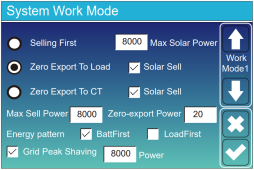Yes, up to the maximum transfer capacity of the autotransformer.
Cool. So as an example, the 2 1kW GTIL inverters I have currently will often be maxed out at 1000W on one leg while the other leg is underutilized at <100W.
I was planning to track down the loads responsible and do some leg-swapping on the mains panel to attempt to get better typical load balance (which is a PITA), but this is making it sound as though if I simply added a 1kW Autotransformer to my system, I’d get better balance between the 2 GTILs so that they both drive much more equal output levels at all time, is that correct?
Yes, assuming an appropriately sized autotransformer or set of autotransformers.
So, for example, if I wanted to use a 3kW zero-export single-phase inverter like this one, I would want to add an Autotransformer of at least 3kW, right? Are there any Autotransformers of this size you have experience with and could recommend?
I would also set the grid positive value in the inverter very high. Possibly as high as 200W or more to ensure a positive input from the grid.
Note the item marked zero export power:
View attachment 71681
That’s a nice interface - did you ever indicate approximate pricing for the 24V 3kW model?
And yes, zero is not necessary - anything under 10% of my average of 600W would be fine (though 200W is higher than I’d hope for).
NOTE:
I would also make sure that the autotransformer(s) are installed AFTER the inverter on the load side.
This I’m not understanding. I’m connected in parallel, so grid into mains load panel and inverter into mains load panel with all loads connected to both in parallel through the breakers. So my inverter is not in between the grid and the load such as is the case for a classical hybrid inverter.
If they are installed between the grid and the inverter, you'll lose power to all 120V loads when the grid goes down because the inverter will go into anti-islanding mode and there will be no neutral return back through the transformers. This is not only inconvenient, but it can also be very hazardous. You never want to lose the neutral without killing the inverter load output completely.
Oh, now I understand - you are talking about backup capability through the critical loads output - backup is not a feature that matters to me.
If I did connect the Autotransformer at the Critical Loads output (even though I have no load there), wouldn’t that mean the full load imbalance has to glow through the inverter?
I suppose the inverter can handle that load and with the Autotransformer located on the Critical Loads output, I’d always have the option of adding some critical loads to a new panel in the future…



